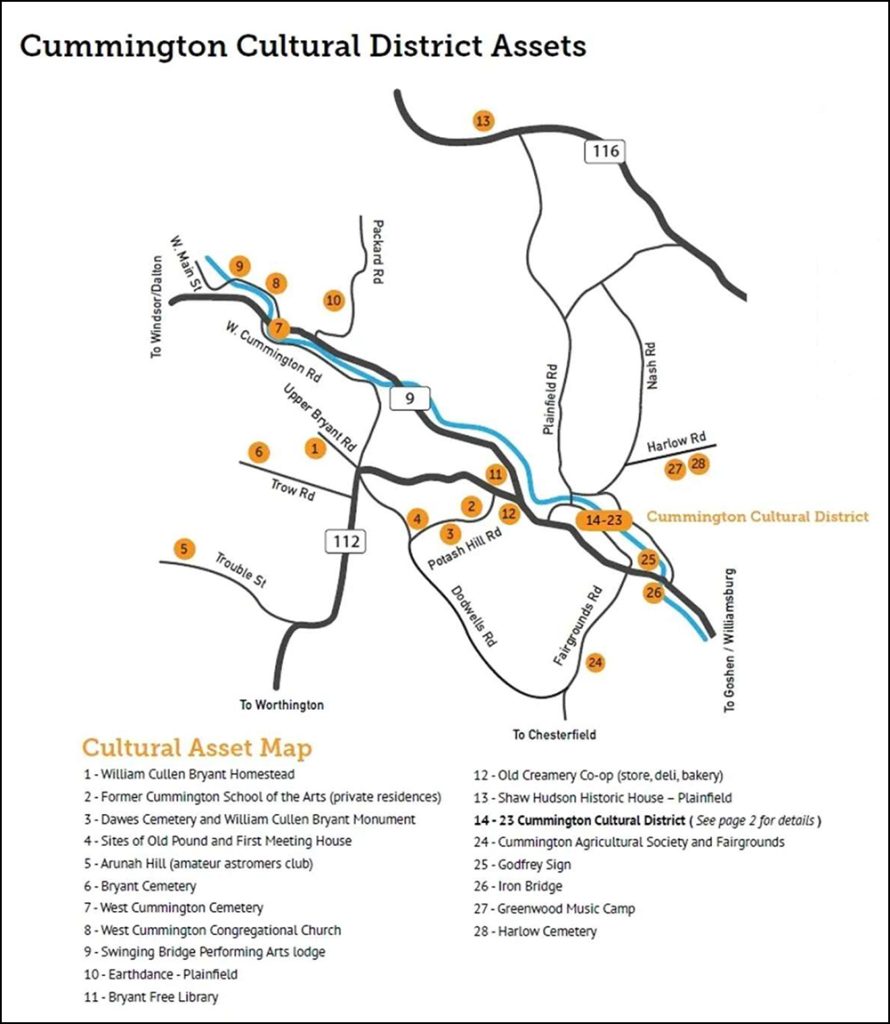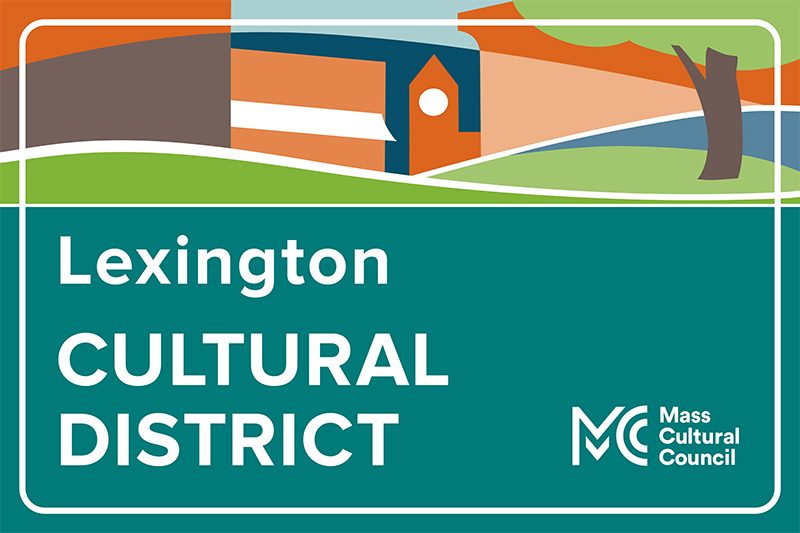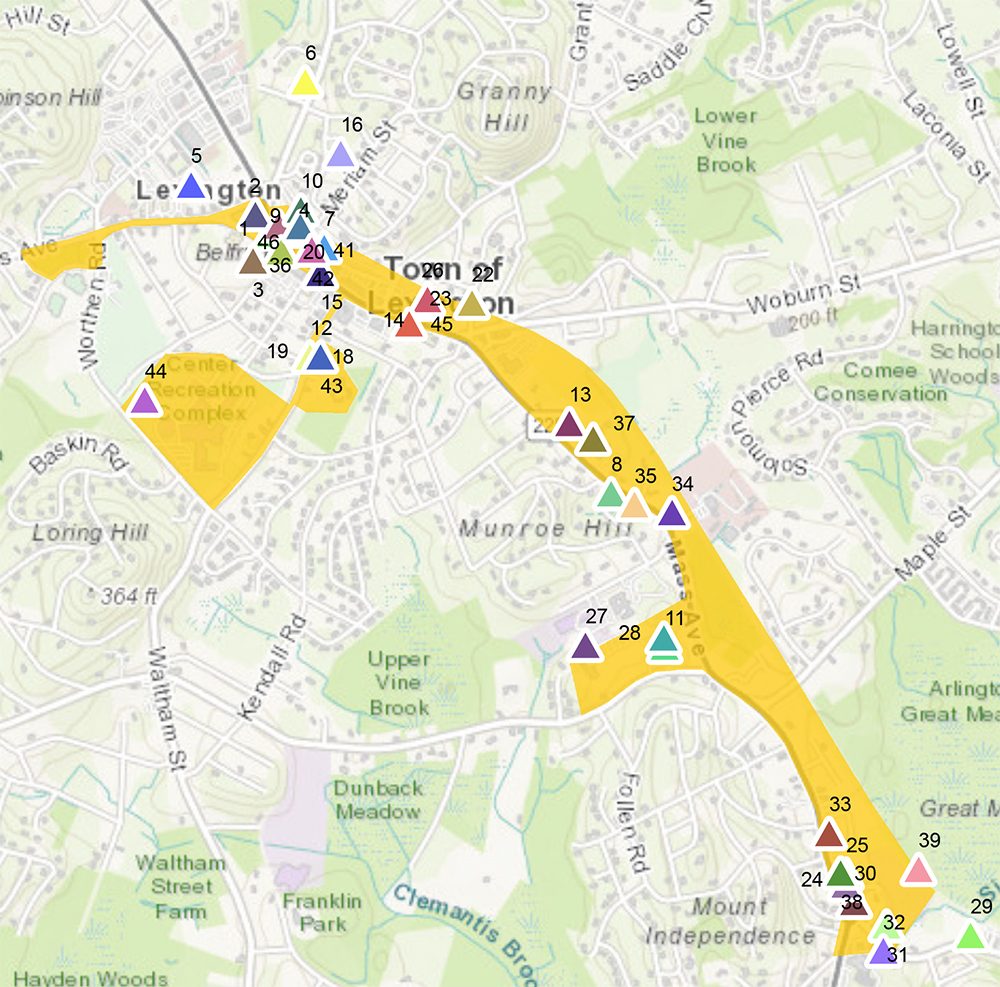Bethann Steiner, Public Affairs Director
Today during the 158th business meeting of the Mass Cultural Council, two new state-designated cultural districts were approved in the communities of Cummington and Lexington. This action increases the total number of state-designated cultural districts in the Commonwealth to 55.
“Today we celebrate and recognize culture and creativity in two very different Massachusetts communities, Cummington and Lexington,” said Michael J. Bobbitt, Executive Director, Mass Cultural Council. “Whether creative individuals are visiting while seeking inspiration from the natural beauty of a rural landscape or students and families are reflecting upon key points in our nation’s history at the very spots made famous during the American Revolution, the Cummington and Lexington Cultural Districts will boost the creative and cultural economies of their host towns by driving tourism and offering programming – and we are thrilled to welcome them to the Massachusetts Cultural Districts Initiative!”
Mass Cultural Council, an independent state arts agency, is charged with bolstering the Commonwealth’s creative and cultural sector. The Agency’s efforts advance economic vitality, support transformational change, and celebrate, preserve, and inspire creativity across all Massachusetts communities.
Established in 2011 by an act of the state Legislature, the Cultural Districts Initiative drives economic growth, strengthens the distinctive local character of communities, and improves the quality of life for families across Massachusetts. By supporting cultural and creative experiences, each of the Commonwealth’s 55 state-designated cultural districts attract tourists and entrepreneurs, which helps cities and towns develop their cultural sector and expand their tax base. Cultural districts are located in communities of all sizes in every region of Massachusetts, and are easy to navigate areas with a density of cultural facilities, activities, and assets. They act as hubs of cultural, artistic, and economic activity, and offer a place-based identity to collaborative community initiatives.
In January, Mass Cultural Council celebrated a record-high $750,000 investment supporting the cultural district network. Because of today’s Council action, both the Cummington and Lexington Cultural Districts are eligible to receive $15,000 each to support activities and goals that encourage their development and success, such as marketing and promotion, capacity building, artist or vendor fees, the development or implementation of creative community placemaking, placekeeping, or public art, collaborative cultural policy or strategic planning processes, or community-engaged and informed data collection and/or reporting.
About the Cummington Cultural District

Arguably the most rural of all Massachusetts’ cultural districts, Cummington has a deep and unique history as a cultural place. Since the 1800s, this small Hampshire County community with a population of less than 900 has been a draw for artists who have come to study, create, and build strong ties. Schools and residencies have supported the visual and performing arts. Poets have found a nurturing and inspiring home, and small presses have flourished.
“The designation is an important step forward for our town. We hope it will bring people together, create partnerships and collaboration among existing cultural institutions and businesses, and ultimately benefit the town as a whole – ‘Only One Cummington’ – as the title of our town history proclaims,” said John Bye, Co-Chair, Cummington Cultural District Committee.
Cummington seeks to revitalize its economy through arts and culture and to bring residents together around a shared identity and town pride. The town hopes its new cultural district will support and utilize the vision and creativity of local artists and cultural workers to improve underutilized space and bring the community together.
A rural, hilly town located at the hub of major roadways connecting the region’s Hilltowns with the Berkshires, Cummington Center, one of three villages in town, is the focal point of the Cummington Cultural District.
Main Street, a preserved and primary point of interest, is one of the district’s most important physical assets. It is a walkable and compact area that retains its feel as a late 1800s community with set-back older homes, churches, museums, and three historically-designated facilities on a tree-lined street. The district is primarily made up of Main Street that runs parallel to the Westfield River and intersects with Route 9 at Fairgrounds Road. The first thing visitors notice when approaching the district is the significant Iron Bridge crossing the Westfield River.
“By designating Main Street in Cummington as a cultural district, it will allow the town to properly honor and celebrate the incredibly rich history and distinctive character that is found here. While I, a selectboard Member and lifelong community member, know how special our town is, this designation will provide our community with an opportunity to bring residents together and spur economic growth through cultural tourism. There is, after all, only one Cummington,” said June Lynds, Cummington Selectboard Member.
The former Berkshire Trail Elementary School building is located at a key entrance to the district, municipal leaders are currently conducting a feasibility study to determine a new purpose for the space, including arts and culture. Expansive public open greenspace is a significant community asset that can be utilized for place-based programming and activations.

Outside the planned district are a variety of cultural assets, including the William Cullen Bryant Homestead, the Dawes Cemetery and William Cullen Bryant Monument, the West Cummington Cemetery, and the Cummington Fairgrounds. A beautiful natural setting with abundant walking trails in forests, state parks, and managed wildlife areas surrounds the community and creates gorgeous scenic vistas. The Swift River is part of the East Branch of the Westfield River and part of the National Wild and Scenic River watershed area, hosting boating, fishing, and waterfalls.
“Congratulations to Cummington on receiving official approval as a state-designated cultural district! Rural communities have much to offer in terms of arts and culture and are often quiet sanctuaries for those looking to create new works of art in all forms. This designation officially puts Cummington on the map as a hub of cultural activity and a community that strongly supports the creative economy,” said State Senator Paul W. Mark (D- Becket). Mark serves as the Senate Chair of the Joint Committee on Tourism, Arts & Cultural Development.
“Cummington is a gem, located halfway between Northampton and Pittsfield, with a vibrant but too often unseen arts community. The designation of this cultural district will help to raise awareness about all that Cummington has to offer and hopefully attract more artists, performers, and tourists to this beautiful community,” said State Representative Lindsay N. Sabadosa (D- Northampton).
About the Lexington Cultural District

Two hours east of Cummington is the historic community of Lexington, a suburban community fifteen miles northwest of Boston. Easily accessible from multiple directions via Routes 93, 95, 2, or 4, it is known for its rich colonial past and as a place where “history and the present are intertwined.”
“This designation will only enhance our vibrant local economy,” said Jill Hai, Select Board Chair, Town of Lexington. “It signifies a commitment from the Town to nurture our community’s present and future arts and cultural initiatives and brings positive economic benefit to our cultural institutions and local businesses.”
Lexington community leaders pursued this designation to encourage greater collaboration among cultural organizations, expand the general awareness of the Town’s cultural assets, and leverage creative and business resources to brand Lexington as a cultural destination. The Lexington Cultural District will help nurture arts and cultural initiatives and bring positive economic benefits to cultural institutions and local businesses while supporting Lexington’s creative community in their ongoing pursuit of partnerships and financial resources.
“A cultural district encourages greater collaboration among cultural organizations, expands awareness of cultural assets, and leverages cultural and business resources to brand Lexington as a cultural destination,” said Lexington Town Manager Jim Malloy. “As we prepare to celebrate the 250th anniversary of the historic Battle of Lexington in 2025, this designation will help bolster the cultural and economic development of the Town.”
The boundaries of the Lexington Cultural District include Mass Ave., from Hastings Park to Pleasant Street. This stretch of Mass Ave. includes Lexington’s main street with significant historical and cultural sites, restaurants, shops, and public spaces. Altogether, it spans just over three miles.
The Town benefits from a mix of cultural and historical assets. It hosts four historic districts, multiple sites of significance, and well-maintained and programmed cultural facilities. Lexington shares the Minute Man National Park with Concord and Lincoln and is a significant tourist attraction for visitors interested in the battles of the American Revolution. The Town has a diverse cultural community of artists anchored by art galleries, a cultural center, performance spaces, museums, and festivals.
Lexington has strong, well-maintained, and nationally recognized physical assets and amenities that are a strong draw for local, national, and international tourists. Some of its most unique assets include many National Historic Landmarks that have a foundational place in the country’s colonial past. Battle Green and the surrounding area are the sites of the first Revolutionary War battle and a tourist attraction with an international appeal. The proximate Buckman Tavern, the Hancock-Clarke House, and the many historic homes that abut the Battle Green create a picturesque feel for visitors and define the Town’s character.
Additional historical and cultural assets are within walking distance or a short ride from the Battle Green. Scottish Rite and Masonic Museum & Library is a unique cultural center with distinctive exhibits and an auditorium. The Cary Library, a beautiful and well-used facility, hosts and facilitates programming by many members of the Lexington community. The Depot, an old train station, is now one of four buildings programmed by the Lexington Historical Society, and Cary Hall is the site of civic and cultural programming throughout the year.

The Lexington Centre shops, restaurants, and well-designed town center create a walkable and inviting commercial district, and the Town has many public parks, walking trails, and the Minute Man Bike Trail. The parks have passive and active recreation spaces, including performing areas and infrastructure to support programming.
“I am really pleased that the Mass Cultural Council has approved the new Lexington Cultural District, recognizing Lexington as one of the most culturally vibrant towns in Greater Boston,” said State Senator Cindy F. Friedman (D-Arlington). “This district will allow Lexington to receive additional state funding to advance and promote the arts and cultural programming within the town and allow for more people to enjoy all that the easily-accessible and historic Lexington has to offer.”
“I am beyond thrilled that Lexington has received this distinction. Centuries of history and activism have made our community thrive, and becoming a state-designated cultural district will allow us to share that vibrancy with more people. My aide and I were happy to participate in the nomination process as it unfolded, and to see the Town selected is greatly satisfying. This is the result of dozens of community members’ work in collaboration with the dedicated staff at the Mass Cultural Council. I applaud everyone’s’ commitment to sharing our tremendous cultural assets with the broader world,” said State Representative Michelle Ciccolo (D- Lexington).
